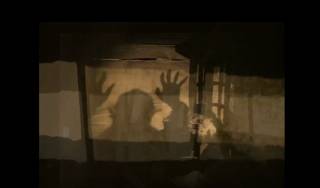Our eyes see very little and very badly...the microscopic as space, place and metaphor in Murnau's Nosferatu
Digital or visual media
McMillan, E. and Hawkins, B. 2016. Our eyes see very little and very badly...the microscopic as space, place and metaphor in Murnau's Nosferatu.
| Creators | McMillan, E. and Hawkins, B. |
|---|---|
| Description | Our Eyes See Very Little and Very Badly...the microscopic as space, place and metaphor in Murnau's Nosferatu is a companion film to Bryan Hawkins' paper 'The Microscopic and Invisible Visible as Space in Murnau’s Nosferatu' [Hawkins 2015] and explores the potency of Vertov’s Kino Eye theory through relevant identification of the opti-centrism of the medium of film and its role in our understanding of the past and present. This short essay film explores collagist palimpsestic and playful approaches to existing and created images, texts and sound as play and as the discovery of the ellipses, continuities and disruptions of the microscopic as territory, space, and place in relation to a re-animation of Vertov’s Kino-Eye through the film as cine-object. The film mixes historic and contemporary image and sound sequences with sources including Lamarck, Ruskin, Vertov, and with Science Fiction, horror, drawing and photography. Simultaneously, Our Eyes See Very Little and Very Badly, seeks to explore film as an essayistic representation that “embraces the form’s ability, through the combination of images, sounds and words, to express the process of subjective thought” [Lee, Kevin 2015]. The essay film is in many ways designed to appeal to the engaged viewer linking directly back to the Russian formalists and their desire to include their audience in active participation and empathetic understanding through considered image juxtapositions. Consequently, the editing process and explicitly the early Russian formalist film theories of Eisenstein et al are central to the construction of the film. The complexity of meaning is presented through an exploration of various editing strategies allowing for signification to be multiplied exponentially. Our Eyes See Very Little and Very Badly offers a cognitive, emotive and perceptual exploration of image and sound which “explicitly reflects on the materials it presents, to actualise the thinking process itself”. [Corrigan, Timothy.2012]. The research articulates, through film, the significance of material cohesion, the possibilities of the spaces and places constructed in the context of the microscopic and directly engages it through the invisible made visible. |
| Date | 2016 |
| Publication process dates | |
| Deposited | 28 Feb 2017 |
| Completed | 2016 |
| Output status | Unpublished |
| File |
https://repository.canterbury.ac.uk/item/88154/our-eyes-see-very-little-and-very-badly-the-microscopic-as-space-place-and-metaphor-in-murnau-s-nosferatu
Download files
128
total views81
total downloads1
views this month0
downloads this month
